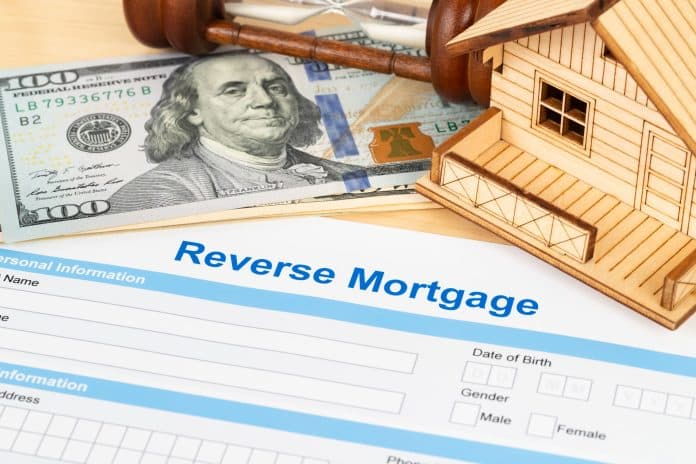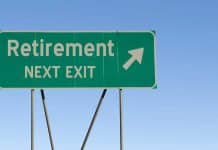
Are you over making your mortgage payments? If so, you’re not alone. That is why a lot of homeowners turn to a reverse mortgage instead. These mortgages may seem too good to be true which is why many people either immediately write them off as a scam or don’t take the time to learn about this legitimate benefit that qualified homeowners can receive. They also have a negative reputation due to the fact that scammers hide under falsified reverse mortgages to scam unsuspecting homeowners. Reverse mortgages may seem complex but they are actually super simple! Keep reading to find out how reverse mortgages can benefit homeowners and understand why there is some controversy around them.
Understanding Reverse Mortgages
A reverse mortgage is basically a typical mortgage but the roles are flipped. Instead of the borrower making payments to the lender, the lender will make payments to the borrower. This flip happens because the borrower already owns the home, and when they borrow against it, they get a loan from a lender that has special repayment terms.
When the borrower moves or dies, the family of the borrower will sell the property to pay off the loan. The borrower (or family members) will receive any difference leftover from the sale. A majority of these mortgages are provided through government-insured programs. When they are government-insured, they are able to impose stricter rules and lending guidelines. There are also other types of reverse mortgages that get issued by private, non bank, lenders. Unfortunately, reverse mortgages with these types of lenders have less regulation and can result in being scammed (this feeds into the stigma around these mortgages).
How Does a Reverse Mortgage Work?
The process of a reverse mortgage isn’t complicated. First, there is a borrower who owns 100% of their home. This means the borrower has a decent amount of accessible equity. Generally borrowers have at least 50% of the property’s value if it is not paid off completely. The borrower has the choice of tapping into their equity, which is when they should turn to a reverse mortgage counselor to get help finding a program for their situation.
Once a borrower figures out the program they want, they need to submit an application. The lender will verify their credit, property details, etc. If approved, the lender will provide the funds in the structure that is specified in the contract.
Once a lender funds a reverse mortgage, borrowers can use the funds for what was arranged in their loan agreement. You may encounter restrictions on how the funds can be used, but it depends on the type of reverse mortgage because there are some that are unrestricted. The loans will last until the borrower moves or dies. Once the borrower moves or dies, they (or their family) repay the loan, or choose to sell the property to repay the lender. The borrower, or their family, gets any difference left over after the loan is repaid.
So, simply put, reverse mortgages are a type of loan on your property that taps into your accessible equity. The lender will provide you the payments in the way that you choose. Once the borrower moves or dies then they (or their family) will need to repay the loan. When either of those things happen, the loan can be repaid or the house can be sold to pay off the loan. Any remaining difference goes to the borrower (or their family).
Different Types of Reverse Mortgages
A majority of reverse mortgages are government-insured (like FHA loans or USDA loans). This means that they have more regulation in the underwriting process, qualification requirements, funding opportunities, and limits. There are also non government-insured reverse mortgages offered by private lenders. These private reverse-mortgages do not have strict regulations like government-insured mortgages. Different types of reverse mortgages include:
- Single-Purpose Reverse Mortgages
- Home Equity Conversion Mortgages
- Proprietary Reverse Mortgages
Single-Purpose Reverse Mortgages
This is generally the cheapest reverse mortgage option. The loans are provided at a local or state level through non-profits for specific reasons. The lender will be the one who sets those reasons. These may only be available in certain areas and designated for certain projects like home repairs or home improvements.
Home Equity Conversion Mortgages (HECM)
HECMs are a government-backed reverse mortgage option. It is backed by the United States Department of Housing and Urban Development (HUD). These can be a little bit more expensive versus other reverse mortgage options. However, there are less limitations and the funds can go towards basically anything. Borrowers have the option to choose how they receive the funds. People can opt for a lump sum, fixed monthly payment, a line of credit, or a combination of regular payments and a line of credit! Borrowers have a bunch of options.
Proprietary Reverse Mortgages
These reverse mortgages are not backed by the government. The lenders set the qualification requirements, terms, fees, underwriting process, etc. Even though this option provides funds quickly and is easy to qualify for, this is the one that has higher scam rates than the others.
Benefits of a Reverse Mortgage
Reverse mortgages can provide a bunch of benefits to eligible homeowners if they choose this option. Benefits include:
- Fund Usability by the borrower
- Costs can go into the overall loan balance
- Competitive interest rates
- Borrowers don’t need to repay their loans right away
Drawbacks of a Reverse Mortgage
Even though reverse mortgages come along with some benefits, they also come along with some drawbacks to keep in mind. Drawbacks include:
- High loan costs
- Loan repayment required
- Borrower must have at least 50% equity
- Borrower has to be vigilant to scams
- A majority of reverse mortgages will require mortgage insurance
- Only some homeowners are eligible
Eligibility Requirements for a Reverse Mortgage
Reverse mortgages can be a great fit for specific types of homeowners. Unfortunately, not everyone can benefit from this type of mortgage. A reverse mortgage is a great option for:
- Seniors at least 62 years old
- Senior Homeowners that need to access their home equity
- Elderly homeowners who don’t have family to inherit their home
- Senior Homeowners who have at least 50% equity if not all
Other important aspects to note is the fact that generally specific types of properties are eligible for government-backed reverse mortgages. This includes:
- Single-family homes
- Multi-unit properties with up to four units
- Manufactured homes built after June 1976
- Townhomes
- Condos
If you do decide to get a government-backed reverse mortgage you can also expect to be required to sit through an information session with a verified reverse mortgage counselor. If you want a private reverse mortgage then you should expect to see different qualifications by lender and loan program.
When to Avoid a Reverse Mortgage
You can automatically disqualify yourself if you aren’t at least 62 years old. However, other times where you may want to avoid a reverse mortgage include:
- Having a hard time finding a reputable lender and/or loan program
- You don’t need to access your home equity
- Your family wants your property when you move or die
Borrowing Limits for Reverse Mortgages
If you choose to get a proprietary reverse mortgage then you are in luck! There are no set limits on how much you can borrow. Instead, the lenders set the limitations and restrictions. This means it can vary from one lender to another (so who you choose is important).
On the other hand, if you choose to get a government-backed reverse mortgage, there are stricter guidelines around borrowing limits. Homeowners are not allowed to borrow up to the appraisal value of their property. They are also not allowed to borrow up to the Federal Housing Administration (FHA) maximum claim amount of $765,600. This can be a little tricky to understand. Simply put, the maximum claim amount (MCA) for a reverse mortgage is the maximum dollar amount that the FHA will insure for a specific type of reverse mortgage. Even if your home was appraised for over $765,000, the government will only insure up to that limit.
How Does a Reverse Mortgage Work?
It’s a common misconception that you don’t need to repay your reverse mortgage! You still need to repay it, just not in the way you may think. Homeowners or their families repay the loan once the homeowner either dies, moves away, or sells their home. Once any of these options occur, the borrowers (or their family) can decide what to do. They can either repay the loan and keep the property or they can sell the home and use the funds towards repaying the loan.
What About Reverse Mortgage Scams?
Scams are nothing new in the world. However, scamming is so common amongst reverse mortgages that these mortgages actually have a stigma against them. While you can’t prevent someone from scamming you, you can be vigilant for signs. Some tips that get can help you against scams include:
- Don’t accept unsolicited offers and advertisements. Find a lender that you trust and begin the process there.
- Make sure to never sign a document if you don’t understand it. Get an attorney for assistance if you need.
- Don’t receive a payment for a property that you don’t own.
Scams can come in many shapes and sizes. Some scams focus on getting personal information, other scams look to steal money, some scams try to charge fees secretly, and more. Getting the help of a reputable attorney is one of your best bets in making sure you avoid a scam.


















